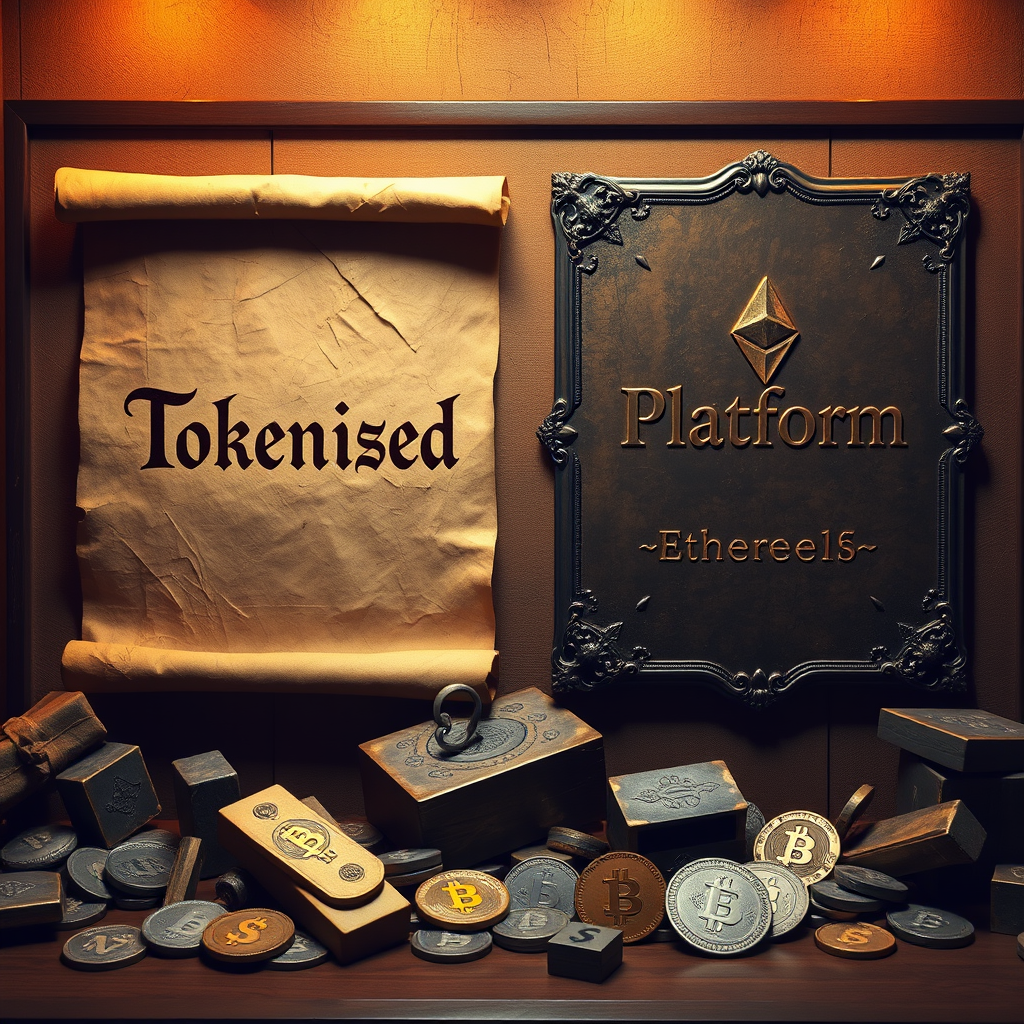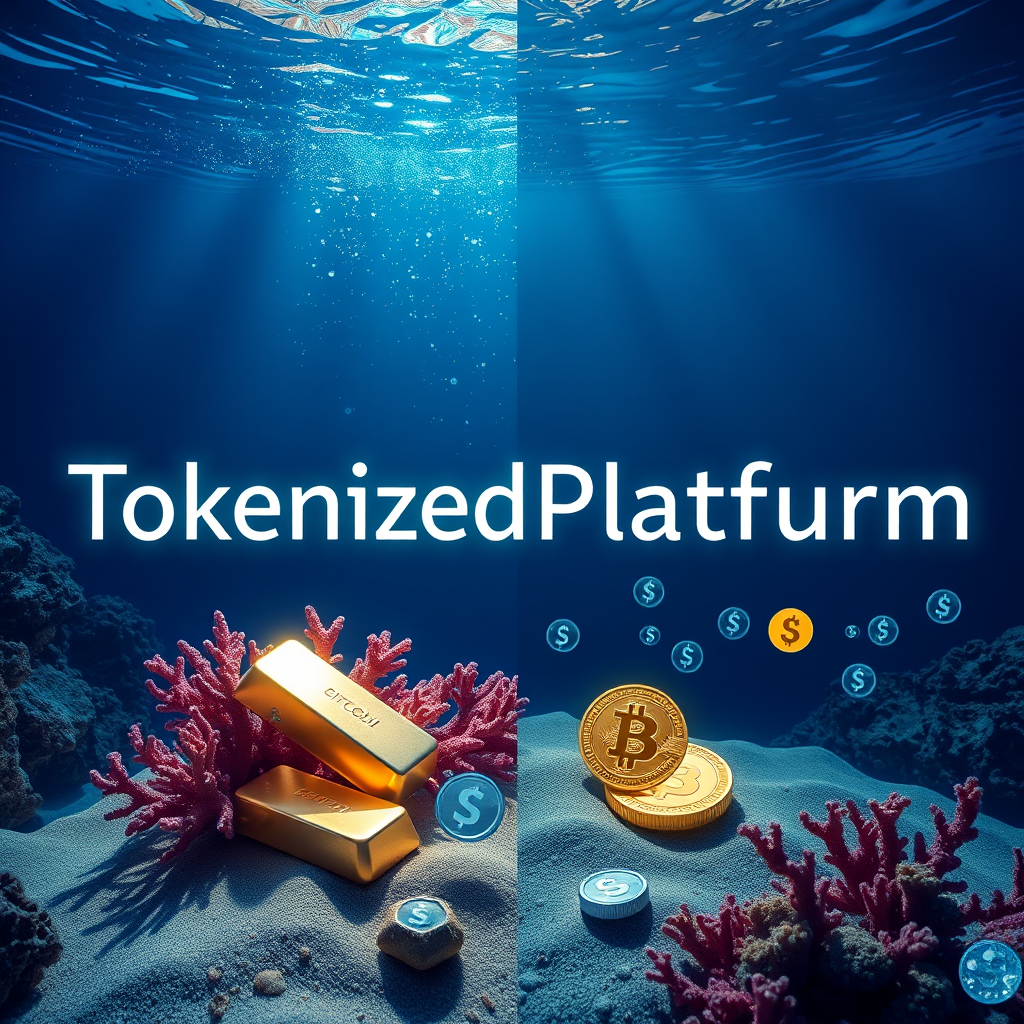Tokenized assets represent a groundbreaking development within the blockchain ecosystem, offering a new way to manage and transfer ownership of assets. As digital representations of physical or virtual assets, tokenized assets leverage blockchain technology to ensure transparency, security, and immutability. This innovation facilitates a more efficient and accessible financial market by allowing assets to be divided into smaller, tradeable tokens. Ethereum plays a pivotal role in this ecosystem due to its robust, tokenized platform that supports a variety of token standards like ERC-20 and ERC-721, enabling the creation and exchange of both fungible and non-fungible tokens. Unlike traditional systems, where asset transfer might be bogged down by intermediaries and paperwork, blockchain comparison highlights Ethereum’s capability to streamline processes with its decentralized approach. Moreover, the scalability of tokenized assets on Ethereum enhances liquidity, enabling more participants to access and trade fractional ownership in assets such as real estate, art, and commodities. By eliminating the barriers typically associated with asset management and transfer, tokenized assets on a blockchain like Ethereum are reshaping the future of financial markets.
Ethereum’s technological advantages

Ethereum sets itself apart from other blockchain platforms with a myriad of technological advantages that make it an ideal choice for the development and management of tokenized assets. One of the most significant advantages is its established and versatile smart contract functionality, which provides the blueprint for creating self-executing contracts on the blockchain. This feature ensures that tokenized assets can be managed and exchanged automatically without the need for intermediaries, reducing the risk of errors and fraud while also lowering transaction costs.
Another key advantage is Ethereum’s comprehensive and flexible tokenized platform. Supporting various token standards such as ERC-20, ERC-721, and the newer ERC-1155, Ethereum offers developers a wide range of options for creating both fungible and non-fungible tokens. This flexibility not only fosters innovation but also allows for the creation of complex applications that can cater to specific requirements of different industries, such as insurance, gaming, and finance.
The blockchain comparison often highlights Ethereum’s strong focus on decentralization and its robust developer community, which collectively contribute to a constantly improving platform. The active involvement of developers ensures continuous upgrades and the introduction of new features, enhancing Ethereum’s scalability and performance. This is crucial for managing the increased volume of transactions associated with tokenized assets, thereby ensuring that Ethereum remains a reliable and scalable solution for various use cases.
Furthermore, Ethereum’s transition towards a proof-of-stake consensus mechanism is poised to significantly improve its energy efficiency. This shift not only addresses environmental concerns but also enhances the platform’s scalability by allowing more transactions to be processed in a faster and more sustainable manner. As a result, Ethereum is not only positioned as a leader in the blockchain space but also as a platform that evolves to meet the growing demands of tokenized assets.
Smart contracts and decentralized applications
Smart contracts and decentralized applications (dApps) are at the heart of Ethereum’s tokenized platform, offering unparalleled capabilities for automation and customization in blockchain-based services. Smart contracts are self-executing contracts with terms directly written into code, running on the Ethereum blockchain. These contracts automatically execute transactions or agreements when predefined conditions are met, reducing the need for third-party intermediaries. As a result, they minimize the risk of errors and fraud, streamline processes, and significantly cut down operational costs.
The flexibility of Ethereum’s smart contracts facilitates the creation of a wide array of decentralized applications. dApps built on Ethereum range across various industries, providing innovative solutions that leverage blockchain’s security and transparency. From decentralized finance (DeFi) platforms that offer financial services without centralized banks to supply chain solutions that enhance transparency and traceability, Ethereum’s dApps are reshaping how businesses operate.
Furthermore, the integration of smart contracts within Ethereum’s framework enhances the scalability of tokenized assets. They allow fractional ownership and seamless peer-to-peer transactions, thereby broadening the asset market to a larger audience. This increased access and participation help in raising the liquidity and market efficiency of tokenized assets on Ethereum.
Ecosystems built on Ethereum benefit from the active developer community that continually refines and extends the capabilities of smart contracts and dApps. This vibrant community drives innovation, ensuring that new challenges are met with robust solutions, keeping Ethereum at the forefront of blockchain technology. Consequently, the versatility offered by smart contracts and dApps ensures that Ethereum remains a dominant force in empowering a new era of digital assets and decentralized services.
Security and interoperability in Ethereum

Ethereum stands out in the blockchain ecosystem for its enhanced security features, which are critical for the management of tokenized assets on a decentralized platform. The foundation of Ethereum’s security lies in its robust architecture and the implementation of smart contracts. These contracts, encoded with specific conditions for execution, substantially reduce human error and eliminate the need for trusted intermediaries, thereby minimizing the risk of fraud. Ethereum’s consensus mechanisms, transitioning towards Proof of Stake (PoS), further fortify its security by incorporating game-theoretic principles that deter malicious activity.
Interoperability is another cornerstone of Ethereum’s appeal, allowing seamless integration with other blockchains and legacy systems. This capability is essential in expanding the usability of tokenized assets, as it fosters a more connected ecosystem where assets can move fluidly between different platforms. Ethereum’s support for standards like ERC-20 and ERC-721 enhances this interoperability, providing a uniform framework that developers and enterprises can rely on for consistent asset representation across various protocols.
The ability of Ethereum to scale effectively, accommodating an increasing number of users and transactions, plays a pivotal role in its security and interoperability strategy. The planned upgrades, including layer 2 solutions and sharding, are designed to enhance scalability by increasing transaction throughput while maintaining network security. This positions Ethereum as a leader in the blockchain comparison for tokenized platforms, offering a balance between performance and robust security measures.
Through its security protocols and focus on interoperability, Ethereum not only ensures the safety and smooth operation of decentralized applications but also paves the way for more innovative financial solutions. By facilitating trustless transactions and inter-platform exchanges, Ethereum continues to support the dynamic evolution of the financial sector, emphasizing its integral role in the proliferation of tokenized assets.
The future of finance with Ethereum

As the financial landscape continues to evolve, Ethereum is poised to play a transformative role in the industry’s future through its tokenized platform and innovative blockchain approach. The shift towards tokenized assets marks a pivotal change in how financial services and instruments are accessed and utilized. Ethereum’s robust infrastructure offers unparalleled opportunities for the creation and management of digital assets, encouraging a more democratized and inclusive financial system.
A key aspect of Ethereum’s influence in the future of finance is its promotion of decentralized finance (DeFi) applications. These platforms leverage Ethereum’s blockchain to provide an alternative to traditional financial intermediaries, offering services such as lending, borrowing, and trading in a decentralized manner. The trustless nature of DeFi ensures that users maintain full control over their assets, which is a significant departure from conventional finance models.
The scalability of Ethereum, particularly with impending technological upgrades like Ethereum 2.0 and the use of layer 2 solutions, ensures that its infrastructure can support the increasing demand for blockchain-based financial services. This growth in scalability not only facilitates more transactions but also enables the development of sophisticated financial products, aligning with the rapidly expanding world of digital finance.
Moreover, Ethereum’s commitment to innovation is reflected in its ability to integrate interoperability solutions, allowing tokenized assets to move seamlessly across different blockchain platforms. This capability is essential for establishing a cohesive financial ecosystem where value can be transferred efficiently and without friction. By fostering interoperability, Ethereum ensures a connected network that can support a broad range of financial applications and services.
Ethereum’s adaptability and robust foundation position it as a leader in driving the future of finance. The continued development and adoption of Ethereum-based solutions promise to redefine financial systems, making them more accessible, efficient, and transparent. As the blockchain comparison continues to emphasize Ethereum’s advantages, its role as a primary catalyst for financial transformation becomes increasingly clear.






